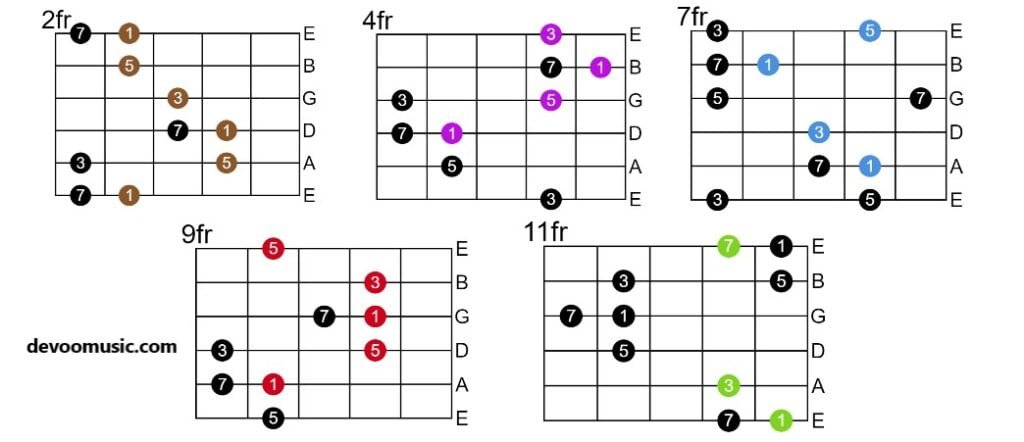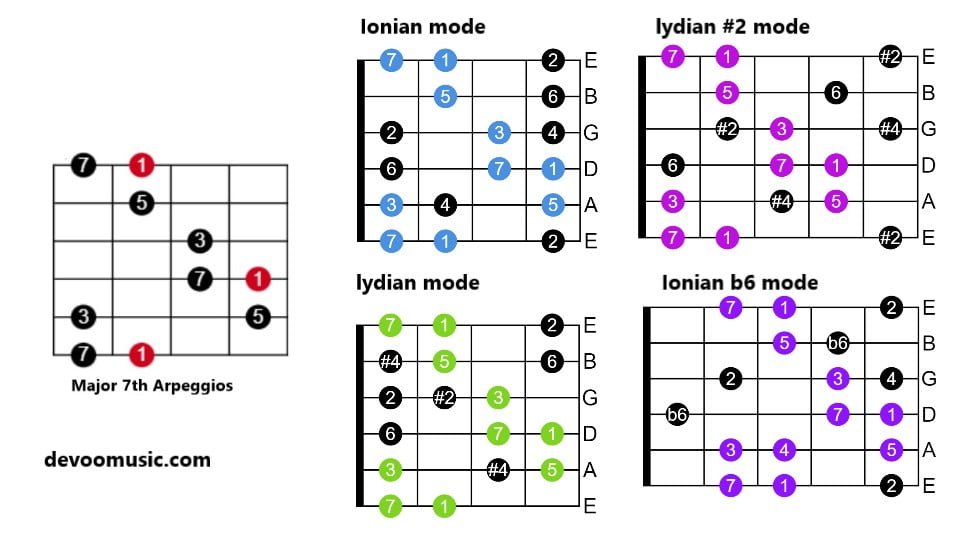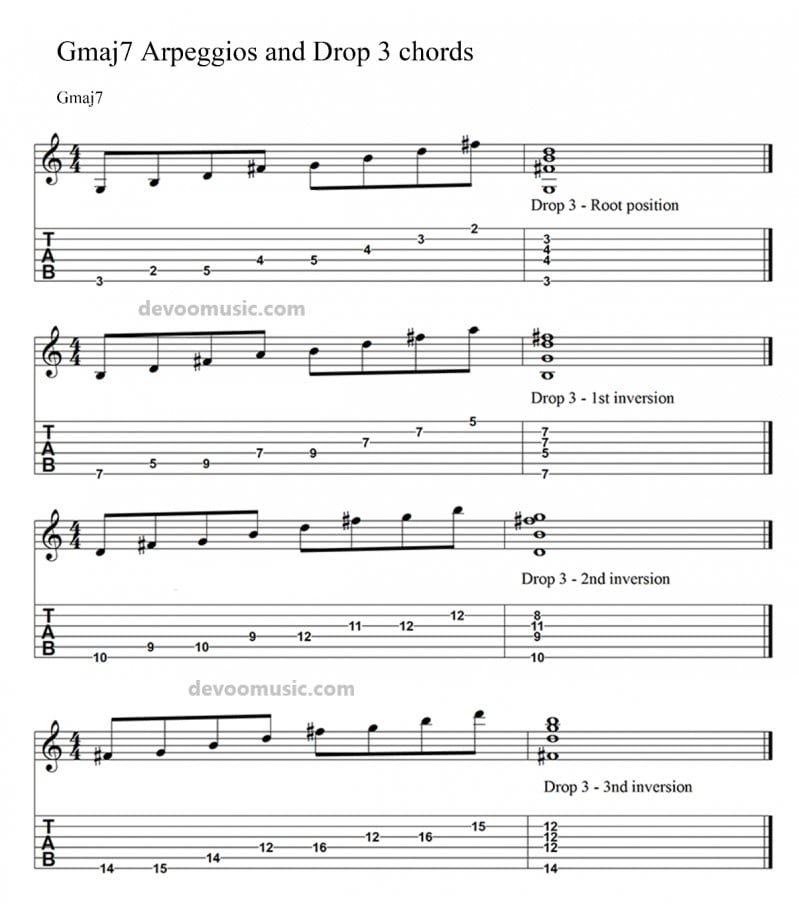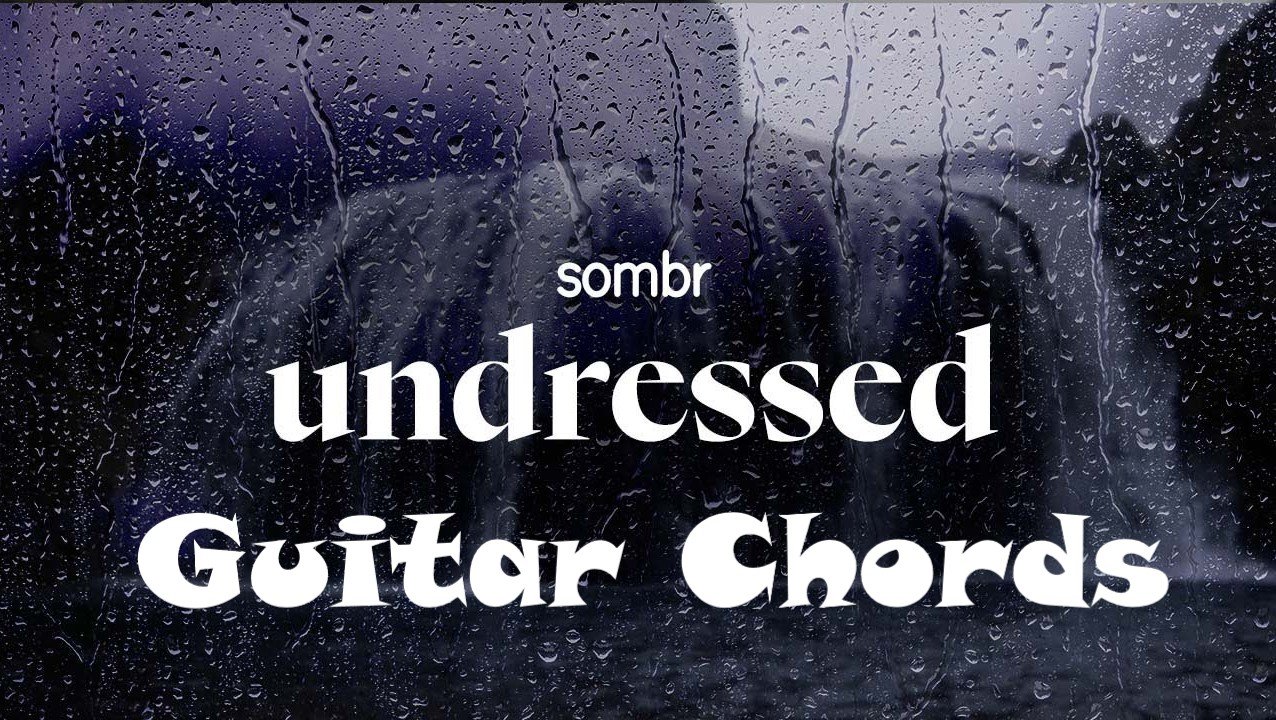How Are Built Major Seventh Arpeggios ?
Major 7 arpeggios are made of tonic (1), major third (3), perfect fifth (5) and major seventh (7). These four tones are from the major scale as shown in the chart below.

The charts below show how to play major 7 arpeggios all over the entire fretboard by using the CAGED method. The first diagram cover the whole guitar neck, the tonic (1) is represented in orange.
The five other shapes below are the arpeggio forms built using the CAGED system. CAGED is a very popular method used by many teachers and students based on the basic chord shapes that are : C for C major, A for A major, G for G major, E for E major and D for D major. The brown dotted notes represent the E shape. The blues notes are the C shape. The pink notes, the D shape. The red notes, the A Shape and the green notes are the G shape.


The five guitar diagrams below show the scales that contains a major 7 arpeggio. These scales are Ionian, Lydian, Lydian #2 and Ionian b6.

The four exercises below show how to connect major 7 arpeggios and drop 3 major 7 chords.

Here is an easy jazz guitar line using a CM7 arpeggio over CM7.

Guitar arpeggios | II-V-I sequence
We can see in this basic II-V-I jazz line how to make connections between different types of arpeggios.
- Ascending D minor 7th arpeggio (two octaves) over the Dm7 chord.
- Descending G dominant 7th arpeggio starting on the major third (B) over G7.
- Ascending C major 7th arpeggio (two octaves) over the CM7 chord.







